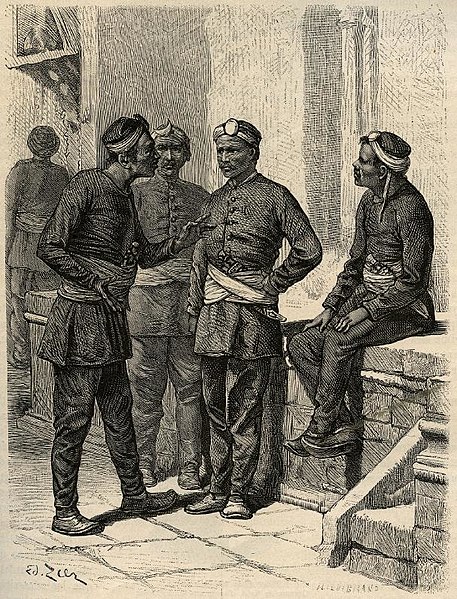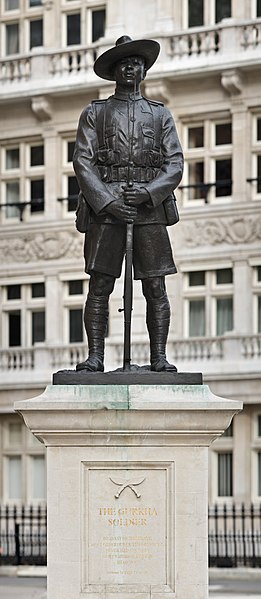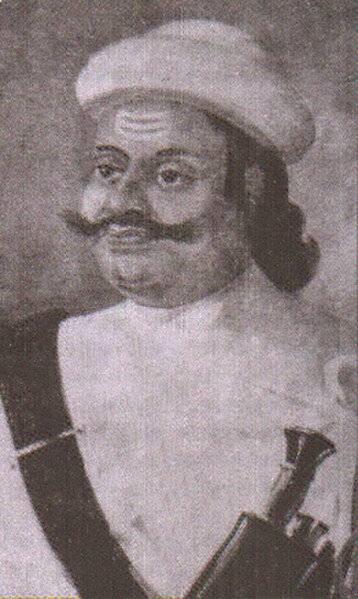The Nepali Army, also referred as the Gorkhali Army, is the land service branch of the Nepali Armed Forces. After the Gorkha Kingdom was founded in 1559, its army was established in 1560, and was accordingly known as the Gorkhali Army. The army later became known as the Royal Nepali Army (RNA) following the Unification of Nepal, when the Gorkha Kingdom expanded its territory to include the whole country, by conquering and annexing the other states in the region, resulting in the establishment of a single united Hindu monarchy over all of Nepal. It was officially renamed simply to the Nepali Army on 28 May 2008, upon the abolition of the 240-year-old Nepalese monarchy, and of the 449-year-old rule of the Shah dynasty, shortly after the Nepalese Civil War.
Nepal Army's Guruju Paltan (a ceremonial infantry company) in traditional uniform
Khukuri, Karda and Chakmak. Khukuri is the symbolic weapon of the Nepali Army
Nepali national soldiers by Gustave Le Bon, 1885
Nepal Army soldiers on Army Day
The Gurkhas or Gorkhas, with the endonym Gorkhali, are soldiers native to the Indian subcontinent, chiefly residing within Nepal and some parts of North India.
Nepali soldiers; drawing by Gustave Le Bon, 1885
Monument to the Gurkha Soldier in Horse Guards Avenue, outside the Ministry of Defence, City of Westminster, London
A khukuri, the signature weapon of the Gurkhas
Kaji (equivalent to Prime Minister of Gorkha Kingdom) Vamshidhar "Kalu" Pande and Chief of the Gorkhali Army; one of the most highly decorated Gorkhali commanders







